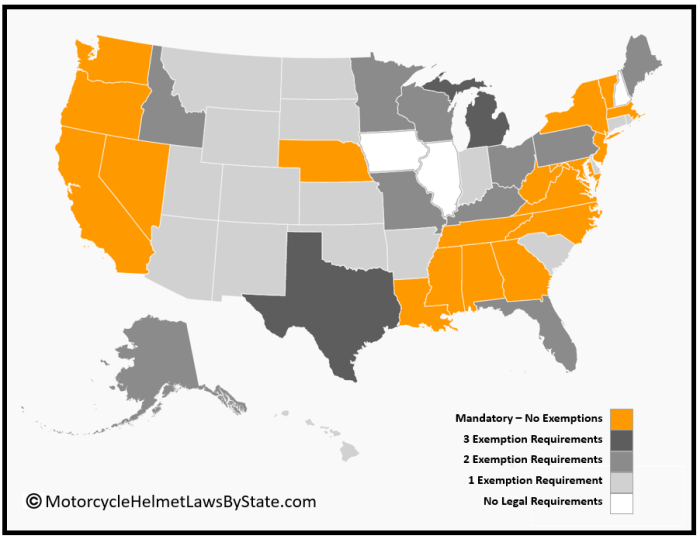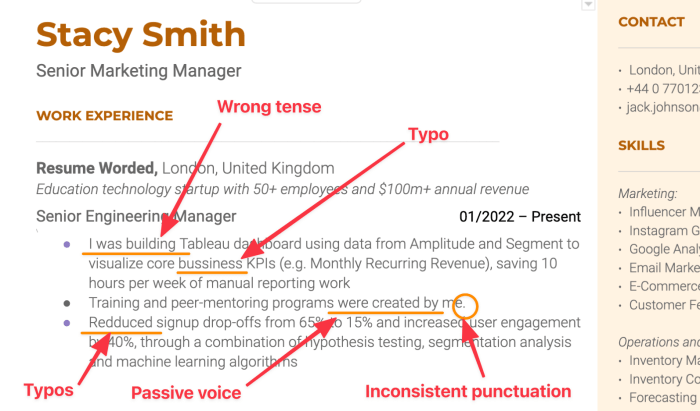
What is megan law – What is Megan’s Law? It’s a powerful and controversial law that aims to protect communities from sex offenders. Born from the tragic story of seven-year-old Megan Kanka, who was murdered by a repeat sex offender, the law has become a cornerstone of public safety in many countries. Megan’s Law mandates the registration of sex offenders, making their information publicly available. This information can be accessed by law enforcement, schools, and even the general public, with the goal of preventing future offenses.
The law’s impact has been significant, sparking debates about balancing public safety with the rights of individuals. While some argue that Megan’s Law helps communities stay informed and safe, others raise concerns about the potential for stigma and discrimination against registered offenders. This article delves into the history, implementation, and controversies surrounding Megan’s Law, exploring its effectiveness and the ethical considerations involved.
What is Megan’s Law?

Megan’s Law, named after seven-year-old Megan Kanka who was murdered in 1994 by a convicted sex offender living in her neighborhood, is a set of laws in the United States that mandate the registration of sex offenders and the public disclosure of their whereabouts.
Purpose and Origin of Megan’s Law
Megan’s Law originated as a response to the tragic murder of Megan Kanka, a New Jersey girl who was abducted, raped, and murdered by a convicted sex offender who had previously been released from prison and was living in her neighborhood without the knowledge of her parents or the community. The law’s purpose is to protect children from sexual predators by providing the public with information about convicted sex offenders living in their communities.
Historical Context
Following Megan’s murder, public outcry and outrage led to the passage of Megan’s Law in New Jersey in 1994. The law mandated that convicted sex offenders register with the state and that their information, including their addresses, be made public. This legislation set a precedent for similar laws to be enacted across the United States, creating a nationwide system for sex offender registration and notification.
Core Principles and Objectives
Megan’s Law, in its various iterations across different states, generally adheres to the following core principles:
- Sex Offender Registration: Convicted sex offenders are required to register with law enforcement agencies, providing personal information such as their name, address, and employment details.
- Public Notification: Law enforcement agencies are mandated to disseminate information about registered sex offenders to the public, often through online databases, community meetings, and other means.
- Community Protection: By providing the public with access to information about convicted sex offenders, Megan’s Law aims to enhance community safety and awareness, enabling residents to take precautions and protect their children.
Key Components of Megan’s Law

Megan’s Law, a landmark piece of legislation, aims to protect communities by providing information about convicted sex offenders. It establishes a framework for mandatory registration and public notification, empowering communities to take proactive measures against potential threats.
Mandatory Registration Requirements for Sex Offenders
The cornerstone of Megan’s Law lies in its requirement for convicted sex offenders to register with authorities. This registration process serves as a crucial tool for tracking and monitoring offenders, ensuring that law enforcement agencies have access to their whereabouts and relevant information.
- Offenders are typically required to register within a specified timeframe after their release from prison or completion of their sentence.
- The registration process often involves providing personal details, such as name, address, date of birth, and employment information.
- Offenders are obligated to update their registration information if any changes occur, such as a change of address or employment status.
Public Notification and Dissemination of Offender Information
Megan’s Law mandates the dissemination of information about registered sex offenders to the public. This notification process aims to raise awareness about the presence of convicted sex offenders in communities and empower residents to take necessary precautions.
- Information about registered sex offenders is often made available through online databases, community alerts, and public meetings.
- The specific details included in public notifications vary by state and may include the offender’s name, photograph, address, and details about their offenses.
- Law enforcement agencies may also utilize community outreach programs to inform residents about the presence of registered sex offenders in their neighborhoods.
Types of Information Included in Offender Registries
Offender registries typically contain a range of information designed to provide law enforcement and the public with a comprehensive understanding of the offender’s history and potential risks.
- Personal Information: Name, address, date of birth, and contact information.
- Offense Details: Nature of the offense, date of conviction, and sentence details.
- Physical Description: Height, weight, hair color, and eye color.
- Vehicle Information: Make, model, and license plate number.
- Employment Information: Current and past employers.
- Risk Assessment: Information about the offender’s risk of re-offending.
Public Access to Offender Data and Associated Concerns
The level of public access to offender data varies significantly across jurisdictions. While some states provide full access to registries, others restrict access to specific groups or individuals.
- Concerns about Privacy: Public access to offender data raises concerns about the privacy rights of registered sex offenders. Critics argue that the public dissemination of personal information can lead to discrimination, harassment, and social stigma.
- Effectiveness of Public Notification: The effectiveness of public notification in preventing sex offenses remains a subject of debate. Some studies suggest that public access to offender registries may not significantly reduce recidivism rates.
- Potential for Misuse: There are concerns about the potential misuse of offender data. For instance, individuals with malicious intent may use the information to target or harass offenders.
Implementation and Impact of Megan’s Law
Megan’s Law, enacted in the United States in 1996, has had a significant impact on how sex offenders are managed and monitored. The law’s implementation has sparked numerous debates and raised crucial questions about balancing public safety with the rights of offenders.
Effectiveness in Preventing Future Sex Offenses
The effectiveness of Megan’s Law in preventing future sex offenses is a complex issue that has been the subject of extensive research and debate. Studies have yielded mixed results, making it difficult to definitively conclude whether the law has a direct impact on reducing recidivism rates.
Some studies suggest that Megan’s Law may have a deterrent effect, as the fear of public disclosure and community scrutiny could discourage some offenders from re-offending. However, other studies have found no clear evidence of a reduction in recidivism rates among sex offenders subject to Megan’s Law. It is important to note that recidivism rates for sex offenses are generally low, making it challenging to isolate the specific impact of any single policy, such as Megan’s Law.
Benefits and Drawbacks of Public Access to Offender Information
Megan’s Law provides the public with access to information about registered sex offenders, including their names, addresses, and photographs. This information is intended to help communities protect themselves from potential dangers. However, the practice of publicly disclosing offender information has generated considerable controversy.
Benefits
- Increased awareness: Megan’s Law raises public awareness about sex offenses and encourages vigilance within communities. By providing access to offender information, the law empowers residents to take precautions and be more informed about potential risks.
- Enhanced safety: The law can help to prevent future offenses by allowing communities to monitor the movements of known sex offenders and take steps to protect vulnerable individuals.
- Community engagement: Public access to offender information can foster community engagement in efforts to prevent sex offenses and support victims.
Drawbacks
- Stigmatization and discrimination: The public disclosure of offender information can lead to stigmatization and discrimination against individuals who have already served their sentences. This can make it difficult for offenders to reintegrate into society and find employment, housing, or support.
- False sense of security: Some argue that Megan’s Law creates a false sense of security, as it does not guarantee that all sex offenders are captured or that the information provided is completely accurate.
- Privacy concerns: The public disclosure of personal information about offenders raises significant privacy concerns, particularly given the potential for misuse or harassment.
Challenges and Controversies
The implementation of Megan’s Law has faced numerous challenges and controversies, including:
- Defining “sex offender”: The definition of a “sex offender” varies widely across jurisdictions, leading to inconsistencies in the application of Megan’s Law. This can result in individuals being classified as sex offenders even if their offenses were not particularly serious or violent.
- Accuracy of information: The accuracy of the information provided on sex offender registries has been a source of concern. Errors in the data can lead to false accusations and unnecessary fear in communities.
- Balancing public safety with offender rights: Megan’s Law has been criticized for striking an imbalance between the need to protect the public and the rights of offenders. Some argue that the law creates a system of perpetual punishment that can hinder offenders’ efforts to rehabilitate and reintegrate into society.
Examples of Megan’s Law Implementation and Impact
Megan’s Law has been implemented in various ways across the United States, with different levels of public access to offender information. Some states have adopted a “community notification” approach, providing limited information to the public, while others have opted for more extensive “public access” registries.
Example: The “Megan’s Law” website in New Jersey
New Jersey’s “Megan’s Law” website provides detailed information about registered sex offenders, including their names, addresses, photographs, and offense histories. The website allows users to search for offenders by name, address, or zip code. The website also includes a map feature that allows users to view the locations of registered sex offenders in their area. This website has been credited with helping to increase public awareness about sex offenders and provide communities with tools to protect themselves.
Example: The “Megan’s Law” website in Texas
Texas’s “Megan’s Law” website provides information about registered sex offenders, but it does not include addresses or photographs. The website allows users to search for offenders by name, date of birth, and offense type. This website has been criticized for not providing enough information to allow communities to effectively monitor sex offenders.
These examples illustrate the varying approaches to Megan’s Law implementation across the United States. While the law has been praised for increasing public awareness and providing communities with tools to protect themselves, it has also faced criticism for its potential to stigmatize offenders and create a false sense of security.
Megan’s Law in the Future

Megan’s Law, a landmark legislation that revolutionized sex offender management, continues to evolve in response to technological advancements, shifting societal attitudes, and evolving public safety concerns. The future of Megan’s Law promises a dynamic landscape, characterized by ongoing debate, innovative solutions, and a constant pursuit of balance between public safety and individual rights.
Emerging Technologies and their Impact, What is megan law
The integration of emerging technologies into sex offender management is a key driver of future developments in Megan’s Law.
- Artificial Intelligence (AI) and Machine Learning: AI-powered systems can analyze vast amounts of data to identify potential high-risk offenders, predict recidivism rates, and optimize resource allocation. These technologies can enhance risk assessment, improve offender supervision, and facilitate more targeted interventions. For instance, AI-driven algorithms can analyze social media activity, online behavior, and other data points to identify individuals exhibiting concerning patterns.
- Geospatial Mapping and Predictive Analytics: Geospatial mapping tools can visualize the location of registered sex offenders, helping communities understand risk areas and allocate resources effectively. Predictive analytics can analyze historical data to identify areas with higher crime rates and predict potential future offenses. This information can inform law enforcement strategies and community outreach programs.
- Blockchain Technology: Blockchain can provide a secure and tamper-proof platform for storing and managing sex offender registry data. This technology can enhance data transparency, accountability, and interoperability between different jurisdictions. By establishing a secure and immutable record, blockchain can address concerns about data manipulation and ensure accurate information is readily available.
Final Summary: What Is Megan Law
Megan’s Law continues to be a subject of ongoing debate, with its effectiveness and impact on communities remaining a point of contention. While the law aims to protect the public from sex offenders, it raises critical questions about privacy, rehabilitation, and the potential for discrimination. As technology evolves and our understanding of sex offender management grows, Megan’s Law will undoubtedly continue to evolve, prompting ongoing discussions about the balance between public safety and individual rights.
Essential FAQs
How does Megan’s Law work?
Megan’s Law requires convicted sex offenders to register with authorities, providing personal information like their address, employment details, and criminal history. This information is then made available to the public through online databases or other means, allowing communities to be aware of potential risks.
Is Megan’s Law effective in preventing sex offenses?
The effectiveness of Megan’s Law in preventing sex offenses is a complex issue. While some studies suggest that it can deter repeat offenses, others argue that its impact is minimal. The debate continues, with no definitive answer yet.
What are the main criticisms of Megan’s Law?
Critics argue that Megan’s Law can lead to stigma and discrimination against registered offenders, hindering their rehabilitation and reintegration into society. They also point out that the law doesn’t address the root causes of sex offenses, such as mental health issues and societal inequalities.


